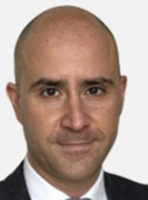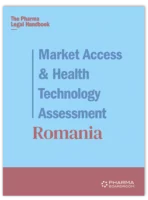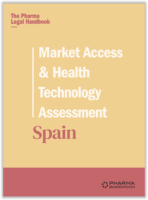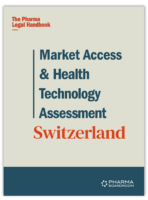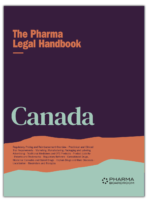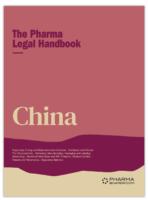Traditional Medicines and OTC Products
/ Italy
The ins and outs of traditional medicines and OTC products in Italy. Prepared in association with DLA Piper, a leading law firm in Italy, this is an extract from The Pharma Legal Handbook: Italy, available to purchase here for USD 99.
1. What are the regulatory requirements for traditional, herbal, complementary, or alternative medicines and devices?
a. Medicinal products
To obtain a marketing authorization for medicinal products through a national, mutual recognition or decentralized procedure, the applicant is always required to submit an application in compliance with Art. 8 of the Pharma Code (which also apply to centralized procedures pursuant to Art. 6 of Regulation (EC) No. 726/2004) which provides the list of mandatory documents and information for the relevant regulatory assessment, except that, in case of generic drugs, it is possible to submit a simplified or bibliographic application under Art. 10 and 11 of the Pharma Code, for biosimilar drugs, the application shall comply with the provisions of Art. 10, paragraph 7, of the Pharma Code , whereas, in case of medicinal products containing active substances used in the composition of authorized medicinal products but not hitherto used in combination for therapeutic purposes, Art. 12 of the Pharma Code provides that the scientific evaluation by the AIFA shall refer to the results of new pre-clinical tests or new clinical trials relating to that combination and that it shall not be necessary to provide scientific references relating to each individual active substance.
Pursuant to Art. 21 and following of the Pharma Code, herbal medicinal products which fulfil certain criteria can benefit from a simplified registration procedure (“traditional-use registration”) providing for a reduction in the documents and information that the applicant must submit to the AIFA, compared with those requested for the registration of traditional medicines. In case the application for a traditional-use registrations refers to herbal substances, preparations and combinations thereof included in the list provided for by Art. 16f of Directive 2001/83/EC, further reductions in terms of documents and information apply.
b. Medical devices
According to the MDR, a medical device can be placed on the market or put into service only if it complies with the provision of the MDR when duly supplied and properly installed, maintained and used in accordance with its intended purpose. To this end, a medical device must meet the general safety and performance requirements set out in the MDR applicable to it, taking into account its intended purpose. Demonstration of conformity with the general safety and performance requirements includes a clinical evaluation.
Applicable safety and performance requirements depend on the risk class of the medical device which is also of relevance for the purposes of identifying the specific procedure to be followed for the affixing of the “CE marking”, that is a marking by which the manufacturer indicates that the device is in conformity with the applicable requirements set out in the MDR and which is precondition for placing the same device on the EU market. Classifications rules for medical devices are set out in Annex VIII to the MDR. The application of said criteria leads to four main classes: I (lowest risk), IIa, IIb, and III (highest risk). In addition, Class I devices can be further subdivided into Is – sterile condition, Im – measuring function and Ir – reusable surgical.
While for low-risk devices the relevant manufacturer declares the conformity of its products by issuing the EU declaration of conformity and affixes the CE marking, for high-risk medical device the demonstration of conformity with the general safety and performance requirements necessary to affix the CE marking requires the involvement of a notified body (i.e. a conformity assessment body designated in accordance with the MDR).
With specific regard to certificates of conformity issued by the notified bodies, they are valid for the period indicate therein, which cannot exceed five years. On application by the manufacturer, the validity of the certificate may be extended for further periods, each not exceeding five years, based on a re-assessment in accordance with the applicable conformity assessment procedures. Any supplement to a certificate remains valid as long as the certificate which it supplements is valid.
2. Can these traditional, herbal, complementary, or alternative products be advertised directly to the public?
Please refer to the answer to Question 17 in Chapter 3 which apply to all categories of medicinal products.
3. What health, advertising, and marketing claims may be made for traditional, herbal, complementary, or alternative products?
There are no specific legal provisions with regard to the type of language to be used in the advertising of medicines to HCPs and to the general public, for example, regarding the use of expert terminology. For those categories of medicinal products whose advertising to the general public is not prohibited and that need to be authorized, the claims must be approved by the MoH.
Having said that, it should be noted that Art. 114 of the Pharma Code lays down the general principle according to which the advertising of a medicinal product must encourage the rational use of the medicinal product, by presenting it objectively and without exaggerating its properties and must not be misleading. Further rules and restrictions apply to the advertising of medicinal products to the general public. Indeed, pursuant to Art. 116 of the Pharma Code, this form of advertising must:
• be set out in such a way that it is clear that the message is an advertisement and that the product is clearly identified as a medicinal product;
• include the following minimum information:
– the name of the medicinal product, as well as the common name if the medicinal product contains only one active substance;
– the information necessary for correct use of the medicinal product; and
-an express, legible invitation to read carefully the instructions on the package leaflet or on the outer packaging, as the case may be.
Art. 117 of the Pharma Code set forth certain limitations on the content of advertising messages addressed to the general public by establishing that they cannot include any material which, amongst other things:
• gives the impression that a medical consultation or surgical operation is unnecessary, in particular by offering a diagnosis or by suggesting treatment by mail;
• suggests that the effects of taking the medicine are guaranteed, are unaccompanied by adverse reactions or are better than, or equivalent to, those of another treatment or medicinal product;
• suggests that the health of the subject can be enhanced by taking the medicine;
• suggests that the health of the subject could be affected by not taking the medicine;
• is directed exclusively or principally at children;
• refers to a recommendation by scientists, health professionals or persons who are neither of the foregoing but who, because of their celebrity, could encourage the consumption of medicinal products;
• refers, in improper, alarming or misleading terms, to claims of recovery.
Lastly, with specific regard to herbal medicinal product Art. 27(4) of the Pharma Code provides that any advertisement must contain the following statement: “Traditional herbal medicinal product for use in specified indication(s) exclusively based upon long-standing use”.
4. What are the regulatory requirements for over-the-counter (non-prescription) medications?
Please refer to the answer to Question 1 which also apply to over-the-counter medicinal products.
5. Are there any limitations on locations or channels through which OTC products may be sold?
In Italy, OTC products can be sold in pharmacies, para-pharmacies and retail businesses set up in Municipalities with more than 12,500 inhabitants. Moreover, since 2015, prescription-free medicinal products, including OTC products, can also be sold online by those pharmacies, para-pharmacies and retail businesses which have obtained an ad hoc prior authorization from the local competent health authority pursuant to Art. 112-quarter of the Pharma Code.
6. What health, advertising, and marketing claims may be made for OTC products?
The rules and limitations on health, advertising, and marketing claims of traditional medicines also apply to OTC products.
7. Can OTC products be marketed or advertised directly to the public?
OTC products can be advertised to the general public provided that the relevant advertising message is previously authorized by the MoH.
8. What is the mechanism by which a prescription-only product can be converted to an OTC product?
A prescription-only product can be converted to an OTC product either on the AIFA own initiative or upon request of the relevant MAH; in the latter case, the conversion application must be expressly approved by the AIFA.
9. What are the requirements for the importation of either traditional medicines or OTC products?
Importing and placing on Italian market medicines from extra-EU countries requires a manufacturing authorization from the AIFA. Moreover, the Decree of the MoH dated February 11, 1997 governs the import in the Italian territory of medicines authorized abroad.







